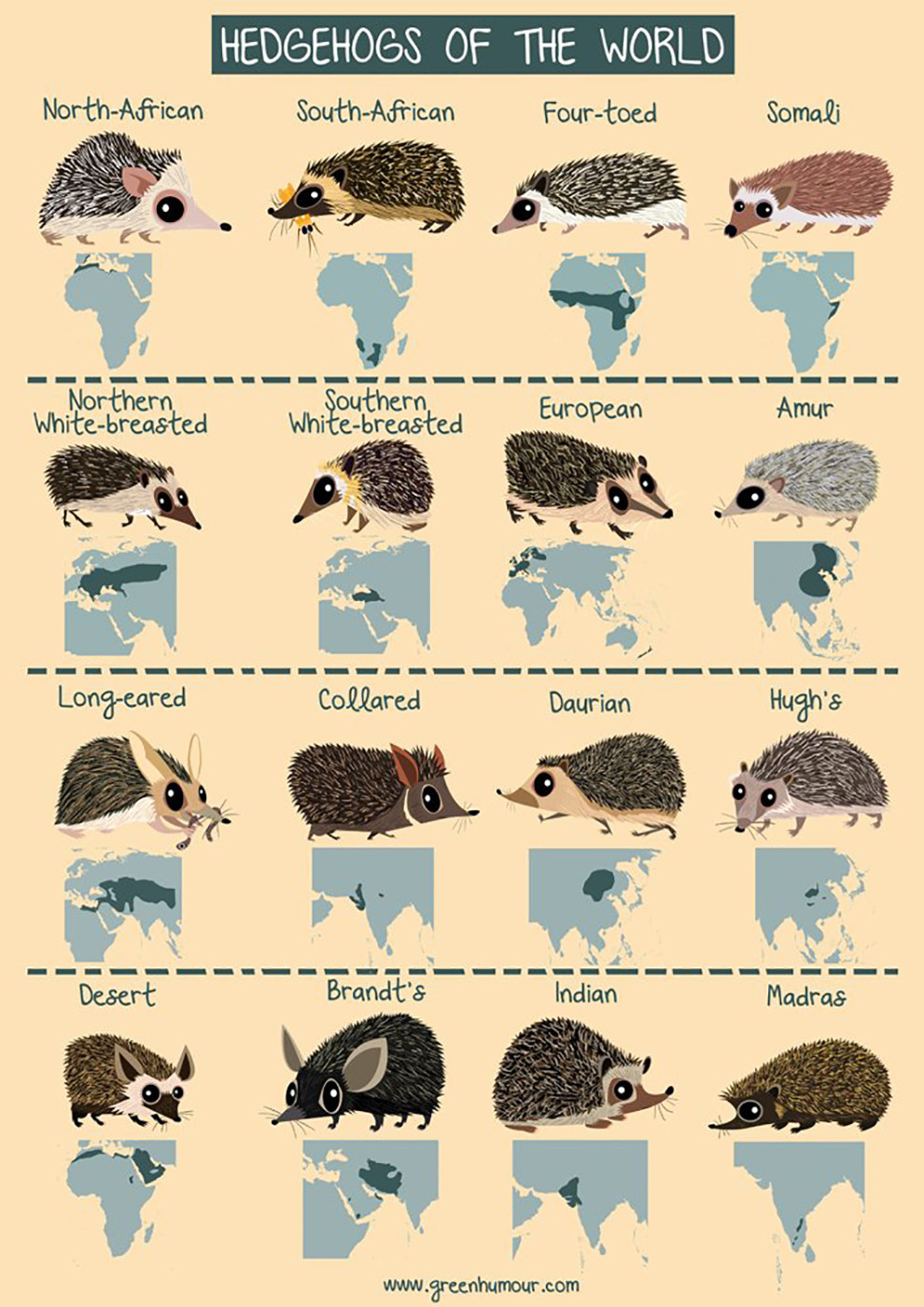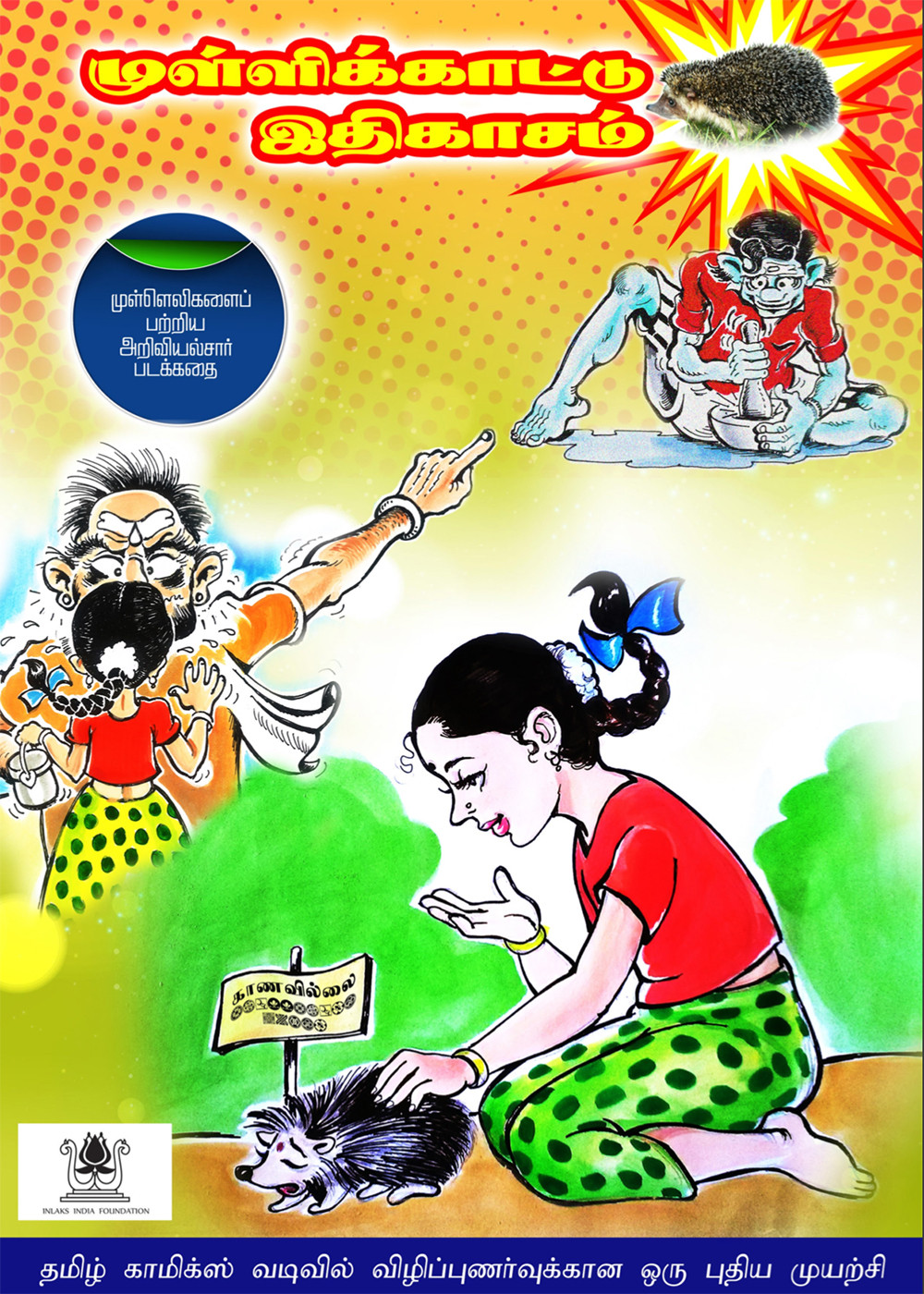Hedgehogs seem to be the stuff of picture books from Britain or characters from American animation films, but they are living, breathing mammals and three different species of hedgehogs inhabit the Indian subcontinent alone. Of these, the Madras Hedgehog (Paraechinus nudiventris) is very poorly studied, says Dr Brawin Kumar, ecologist and conservationist, who is working to save this endemic species from obscurity, even possible oblivion. The Kanyakumari-born researcher recalls his first sighting of the spiny animal, resembling “a small bunch of twigs arranged with utmost care”, as it ambled about in the scrub looking for food.
Kumar, who earned his PhD from the Chinese Academy of Sciences, Beijing (2015- 2019) is now a National Postdoctoral Fellow at the Indian Institute of Science Education and Research (IISER), Tirupati. The ecologist studies the Elvira Rat (Cremnomys elvira), a rodent of the Eastern Ghats. As part of his efforts to save the Madras Hedgehog, the conservationist has brought out a comic book in the local dialect for children in Tamil Nadu, who live in and around the hedgehog’s habitat.
When did you begin to study the Madras Hedgehog?
In 2010, soon after I graduated with a master’s degree in biotechnology, I joined the ZOO Outreach Organization in Coimbatore to work in conservation biology. I worked on small mammal surveys. A year later, on World Environment Day, I went to Tirunelveli for a celebration. There, the locals asked me about the mull-eli (thorny rat), a tiny creature which often ends up as roadkill. This was my first introduction to the Madras Hedgehog. I read up everything I could about them. These mammals, endemic to South India, were recorded in scientific literature way back in 1851. Even today so little is known about the behaviour of these, solitary, nocturnal and elusive animals. Perhaps, the hedgehogs in Tirunelveli come out to sun themselves on tar roads. The hedgehogs cannot scurry away to avoid the traffic.
Soon, I began gathering data about the distribution of hedgehogs in Tamil Nadu. The work which was formally launched in 2012 covered 16 districts in the state. We did fieldwork in areas where they have been historically documented. Local newspapers that reported sightings turned out to be a surprisingly good resource. We networked with local conservation groups like the Nellai Nature Club, and people reported sightings from camera traps. I drew up a questionnaire to document people’s perceptions about hedgehogs across their known range and had nearly a thousand respondents. At the end of the five-year-long study, my fellow researchers and I got a clearer picture of the distribution of these hedgehogs and about the threats to their survival. In 2018, we published a detailed paper in Mammalia, based on our findings.
What were some of the findings that came out of your research study?
Hedgehogs were not confined only to arid landscapes in Tamil Nadu and have a wider distribution than previously thought. The habitats include pasture lands, edges of agricultural fields, shrublands, grasslands, urban areas, sand dunes, and foothills of small hillocks. Madras Hedgehogs live in burrows and come out in search of insects. You can see them in cattle-grazing fields, behind houses and under palmyra tree leaves. In the late evenings, you could see them near lampposts, hoping to feast on insects that fall to the ground.
We also pooled together confirmed locations and sighting records and used an algorithm to predict the potential distribution range of hedgehogs in southern India. We have to conduct more field-based research to make sure these mammals are living safely in those locations.
The fact is ninety per cent of the hedgehog population in the state lives outside protected areas, where, unlike megafauna like elephants and tigers, small mammals have no safeguards under the Indian Wildlife Protection Act. Hedgehogs are not vermin, but their local name is mull-eli (thorny rat), so people don’t think twice about killing them. This is truly unfortunate. Being insectivores, hedgehogs are natural allies of farmers, a fact we need to emphasise during outreach.
Though the International Union for Conservation of Nature (IUCN) places Madras Hedgehog in the “Least Concern” category, you have seen worrisome things on the ground.
Worldwide, wildlife has had to contend with habitat loss and the threats of climate change. But the Madras Hedgehog is also a victim of local superstitions. The dried skin of the hedgehog is considered a status symbol and hung outside people’s homes. Hedgehog spines are dried and used as medicine for whooping cough and other ailments.
When hedgehogs sense a physical threat, they curl up into a spiny ball. Hunters then pick them up easily and sell them in the marketplace. Hedgehog meat is also consumed as a delicacy. Hedgehogs that end up as pets die soon because they are fed vegetables instead of insects. They are not mini porcupines. Even zoos which get rescues do much the same thing. There is simply not enough scientific awareness about the animal.
Speaking to village elders, I learned that, in the past, they would see dainty pugmarks made by these spiny animals in the fine sand, but such sightings are rarer now. Speaking to the children, I learned that if they found a hedgehog near, say, a termite mound, they’d make it curl up, and use it as a ball in their games. I was horrified!
Is that why you decided to bring out a Tamil comic book on Madras Hedgehogs?
As an ecologist, it shocked me to see that the children in the hedgehog’s homeland were growing up ignorant of this tiny mammal. I worked to create a 20-page Tamil comic book Mullikkaattu Ithigaasam (Legend of Scrub Forest). The plot is like this: Two schoolchildren rescue a little hedgehog from an unlicensed, misinformed practitioner of medicine. Most of its siblings have already ended up as roadkill and the mother is delighted to be reunited with her little one. (On average, the Madras Hedgehog has a lifespan of five years and gives birth to 2-3 young ones in each reproductive cycle.)
In the academic year 2018-19, I started distributing the [comic] books in a few schools in southern Tamil Nadu, near the habitats of Madras Hedgehogs. The response was heartening. When schools reopen after the pandemic, I will start my outreach efforts once again. In Tamil Nadu, there are 150 + locations where hedgehogs live. Researchers and local NGOs in these areas have to work together to save these little creatures before they go locally extinct. The endemic hedgehog is in need of a mention in local school textbooks.
Tell us about your stint in China and your plans for hedgehog outreach.
In 2014, I attended the week-long International Training Course on Frontiers in Animal Ecology and Conservation Biology at the Chinese Academy of Sciences in Beijing. The following year, I was offered a fellowship to pursue doctoral research at the institute. My research was on the evolutionary history of the Yarkand Hare (Lepus yarkandensis), which is endemic to China’s Takla Makan Desert. At first, it was tough for me, without knowing the language, but when I completed my degree in 2019, I received the Excellent International Graduate Award, with a certificate and cash prize from the director of the institute.
Now that I am back in Tamil Nadu (where language is not an issue for me), my goal is to conduct a mass outreach programme for the conservation of the Madras Hedgehog and its habitat. We need to get corporates, wildlife enthusiasts, forest officials, students of zoology and celebrities involved. I would also like to explore linking with community radio stations to try and save the last remaining few pockets of hedgehog habitats. It is hard to find grant money for small mammal research, but we need to do the research to conserve any animal in the best possible manner.
The Madras Hedgehog is found in the other southern states as well. Besides, there are two other species of hedgehogs in our country: the Long-eared Hedgehog and the Indian Hedgehog. The government could nominate a Hedgehog Day to shine a spotlight on these creatures and make them a part of the nation’s biodiversity conservation mission. The birthday of M. Krishnan (30 June, 1912), pioneering Indian naturalist and nature writer, would be an ideal date. While these mammals are known to resist a range of toxins, M. Krishnan was the first person to document that the Madras Hedgehog can even survive snakebites. It would be great to research the science behind this surprising ability.
Publications by Brawin Kumar:
- https://www.degruyter.com/view/journals/mamm/83/4/article-p399.xml?language=en
- Predicting the potential distribution of the lesser-known endemic Madras hedgehog Paraechinus nudiventris (Order: Eulipotyphla, Family: Erinaceidae) in southern India in: Mammalia Volume 83 Issue 5 (2019) (degruyter.com)
- https://www.traffic.org/site/assets/files/3012/traffic_pub_bulletin_28_1-madras-hedgehog.pdf






